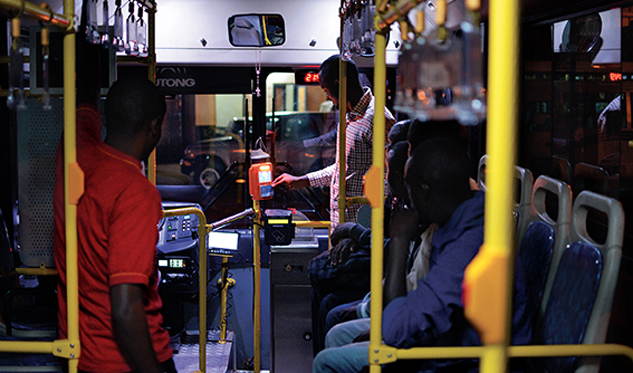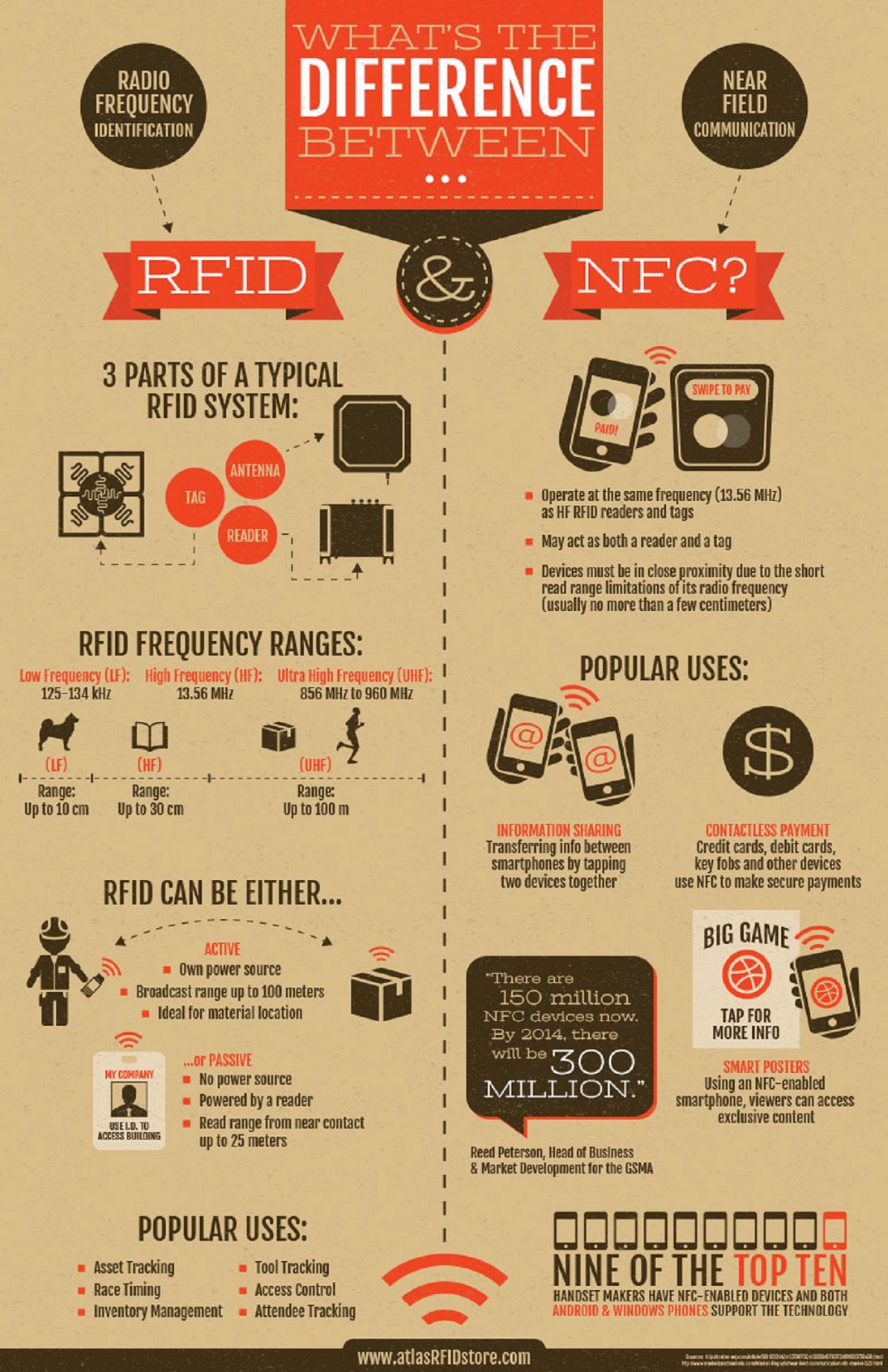RFID based payment system in Kigali Bus Service Picture from Hope magazine
RFID is a one-way process. Information is transmitted from an encoded memory chip (known as a “smart tag”) via an antenna to an RFID reader. There are two types of RFID tags: active and passive.
Active RFID tags contain a power source, so they can broadcast a signal, up to 100 meters away. This capability makes RFID a strong choice for asset tracking.
Passive RFID tags have no power. They’re activated by an electromagnetic signal sent from the RFID reader. The signal doesn’t travel as far as active RFID, so they’re used for short read ranges. Passive RFID falls into one of three frequency ranges:
- Low frequency: 125-134.2 kHz
- High frequency: 13.56 MHz
- Ultra-high frequency: 856-960 MHz
NFC is based on RFID protocols. The devices run at passive RFID’s high frequency. NFC reads smart tags because, like RFID, it features a read/write operation mode.
But NFC goes farther than RFID. The technology has two-way communication—unlike RFID’s one-directional limitation—using one of two modes: card emulation and peer-to-peer (P2P).
For example, a smartphone enabled with NFC (and many of them are nowadays) can pass information back and forth to another NFC device. Contactless payment is an example of card emulation mode. Any time you redeem rewards points via your phone, you’re also using NFC’s card emulation feature.
P2P comes into play when you “bump” your mobile device with another one to share information. Maybe you’re passing music back and forth, swapping special deals, or playing a game with the friend sitting next to you. You can even tap your device with a router, to get on that network without having to use a password.
NFC will soon likely replace QR codes in some advertisements and promotional materials. Consumers will no longer have to scan a QR code to get to the intended location, but can simply use the NFC mode to instantly get the information that the advertiser wants them to have.
There is still plenty of space across today’s industries—from retail to manufacturing, transportation to healthcare—for RFID’s one-way communication, but NFC is paving another path along the ever-winding information highway.

